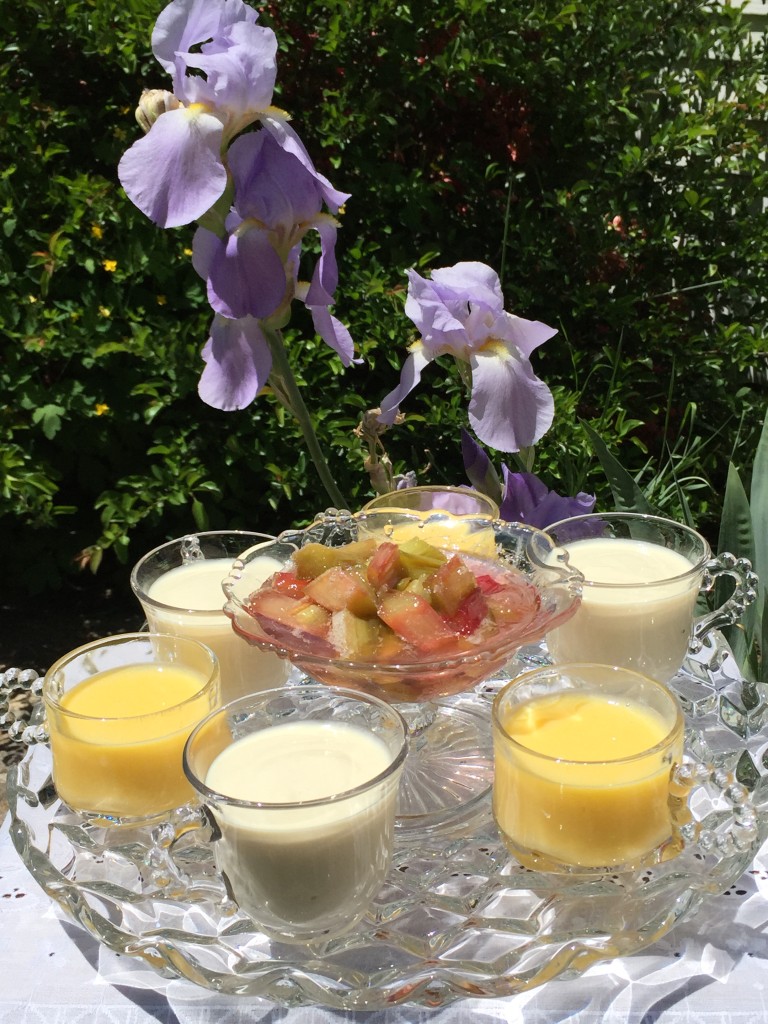Lemon Cream
Beat well together a quart of thick cream and the yolks of eight eggs. Then gradually beat in half a pound of powdered loaf-sugar, and the grated rind of three large lemons. Put the mixture into a porcelain skillet and set it on hot coals till it comes to a boil; then take it off, and stir it till nearly cold. Squeeze the juice of the lemons into a bowl; pour the cream upon it, and continue to stir it till quite cold. You may serve it up in a glass bowl, in glass cups, or in jelly glasses. Eat it with sweetmeats and tarts.
Eliza Leslie, Directions for Cookery, 1837
WHITE STIRRED CUSTARD WITH ORANGE AND MACE
Sensitive custards like this one are more sure-fire if prepared over simmering water rather than direct heat. If you have one, use a double-boiler, whose top container is specially constructed to prevent the container sides from overheating. Otherwise, straddle a bowl over a pan or pot. (You actually can boil Leslie’s custard, as she says, if you make the recipe as written, but not if you reconfigure it with egg whites.) Whole mace has to be bought through a specialty outlet. If you don’t have it, a medium-size whole nutmeg, lightly crushed or chopped, will provide a reasonably similar flavor. The lemon and orange juices added at the end of the recipe will initially thin the custard, but because they are acidic, they will lightly clabber the custard as it chills, making it even thicker.
In the top container of a double-boiler, over simmering water, combine 2 cups heavy cream, the grated zest of 1 large orange, and 2 teaspoons whole mace. Heat the cream mixture until it steams and becomes uncomfortably hot for your finger, and then slip the pan off heat, cover, and let the mixture steep over the hot water for 1 to 2 hours. In a medium bowl, whisk 4 large egg whites (about 1/2 cup), 1/2 cup sugar, and a pinch of salt just until well combined but not frothy. Add the cream mixture, whisk until well blended, and return all to the top container. Heat the water in the double-boiler pan until it simmers gently; adjust the heat to maintain the water at this temperature. Place the top container over the pan. Stirring constantly with a wooden spoon or heatproof rubber spatula, and being sure to sweep over the entire container bottom, heat the custard until it thickens to the consistency of raw egg white, about 165 degrees on an instant-read thermometer. This will likely take 4 to 7 minutes. Immediately pour the custard through a fine sieve into a clean bowl and press the solids in the sieve with the spoon or spatula to release clinging custard. Set the bottom of the bowl in cold water and, stirring occasionally, cool the custard to room temperature. Stir in 1 tablespoon strained lemon juice and 2 tablespoons strained orange juice. Transfer the custard to a covered container and refrigerate for at least 3 hours (or for up to 3 days) before serving. This recipe makes a generous 2 1/2 cups of custard, enough for 4 to 6 people (or twice as many if served with the yellow custard).

